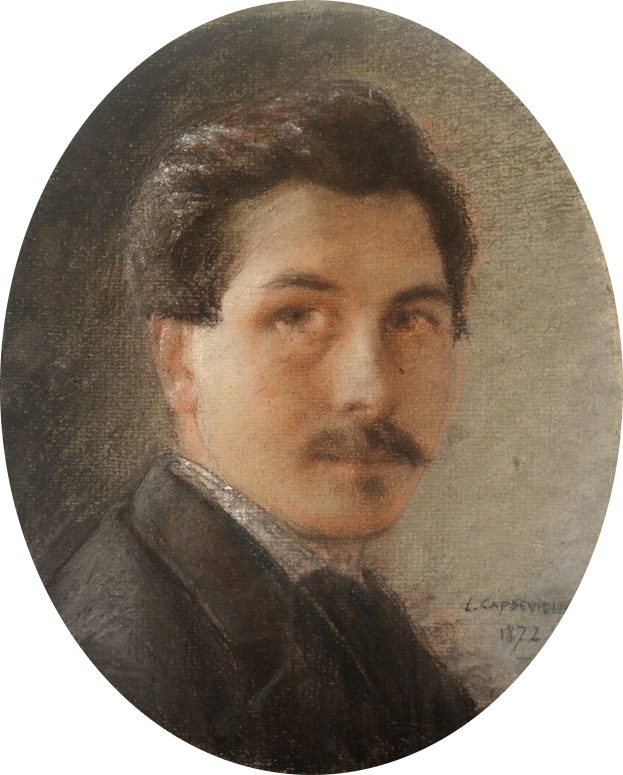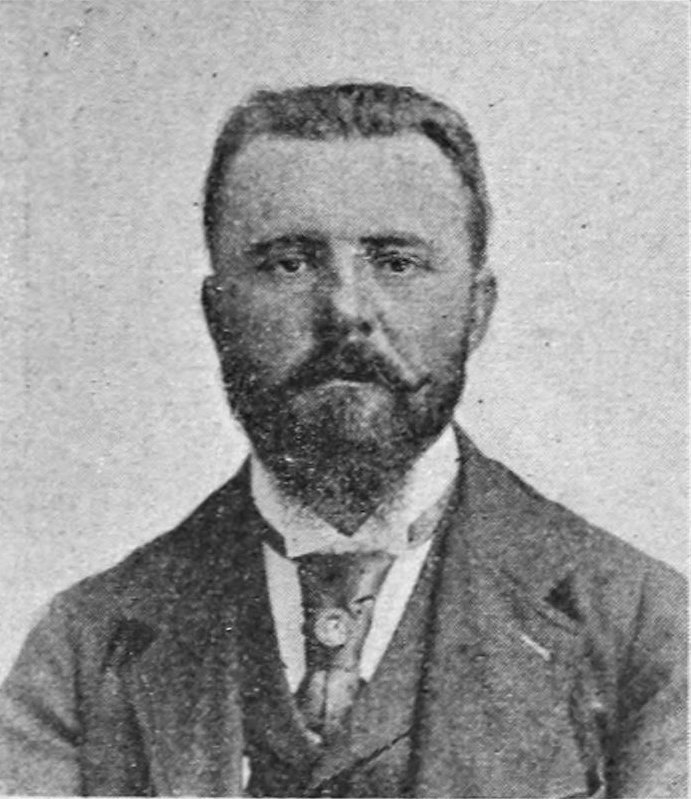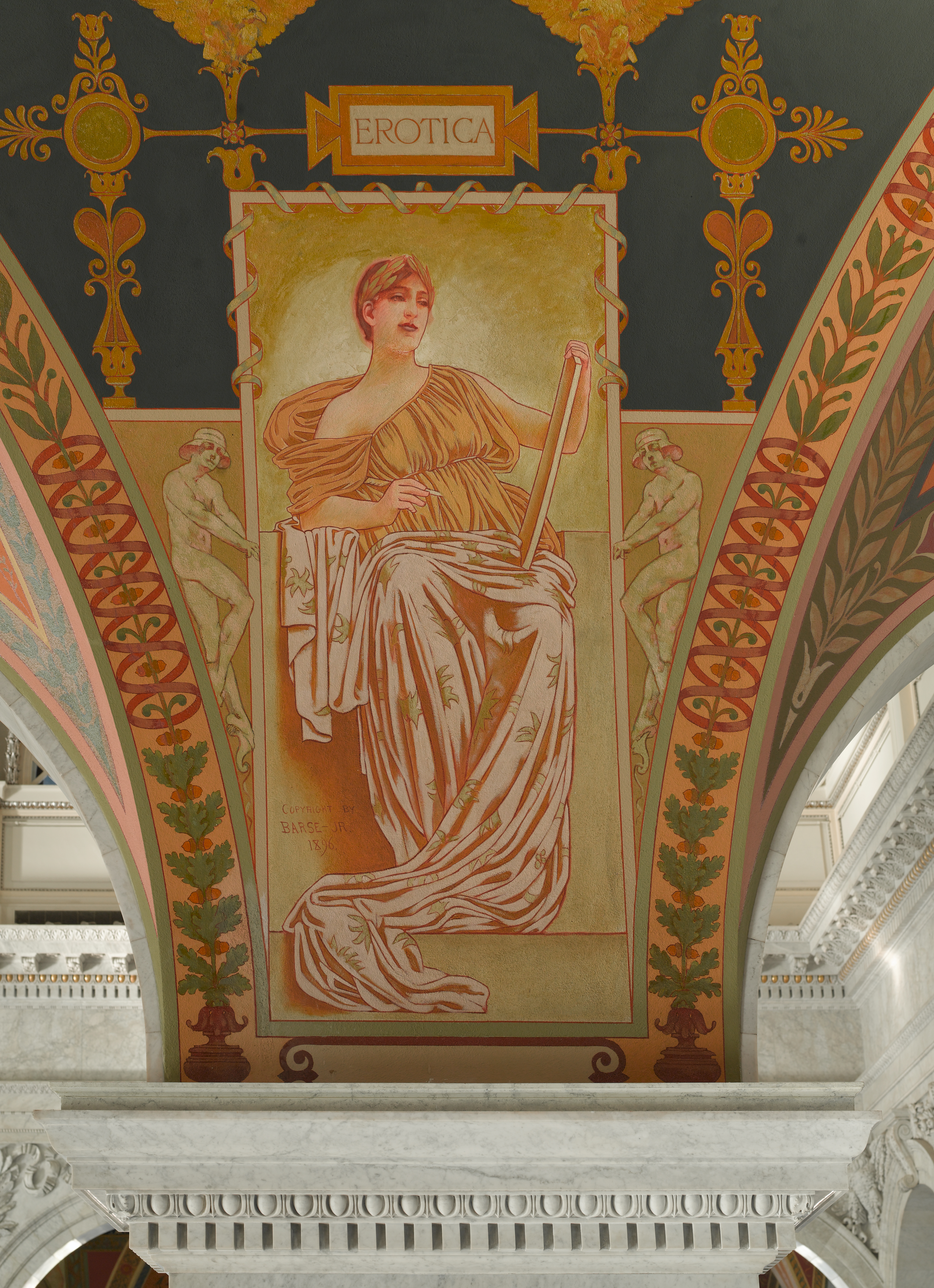|
Cabanel
Alexandre Cabanel (; 28 September 1823 – 23 January 1889) was a French painter. He painted historical, classical and religious subjects in the academic style. He was also well known as a portrait painter. According to ''Diccionario Enciclopedico Salvat'', Cabanel is the best representative of ''L'art pompier'', and was Napoleon III's preferred painter. Biography Cabanel entered the École des Beaux-Arts in Paris at the age of seventeen, and studied with François-Édouard Picot. He exhibited at the Paris Salon for the first time in 1844, and won the Prix de Rome scholarship in 1845 at the age of 22. Cabanel was elected a member of the Institute in 1863. He was appointed professor at the École des Beaux-Arts in 1864 and taught there until his death. He was closely connected to the Paris Salon: "He was elected regularly to the Salon jury and his pupils could be counted by the hundred at the Salons. Through them, Cabanel did more than any other artist of his generation to ... [...More Info...] [...Related Items...] OR: [Wikipedia] [Google] [Baidu] |
The Birth Of Venus (Cabanel)
''The Birth of Venus'' (French: ''Naissance de Venus'') is a painting by the French artist Alexandre Cabanel. It was painted in 1863, and is now in the Musée d'Orsay in Paris. A second and smaller version (85 x 135.9 cm) from ca. 1864 is in Dahesh Museum of Art. A third (106 x 182.6 cm) version dates from 1875; it is in the Metropolitan Museum of Art in New York City. Shown to great success at the Paris Salon of 1863, ''The Birth of Venus'' was immediately purchased by Napoleon III for his own personal collection.Rosenblum 1989, p. 38. That same year Cabanel was made a professor of the Ecole des Beaux-Arts. Cabanel's combination of sensual and classical imagery appealed to the higher levels of society. Art historian and curator Robert Rosenblum wrote of Cabanel's ''The Birth of Venus'' that "This Venus hovers somewhere between an ancient deity and a modern dream"; he described "the ambiguity of her eyes, that seem to be closed but that a close look reveals that she is ... [...More Info...] [...Related Items...] OR: [Wikipedia] [Google] [Baidu] |
Academic Art
Academic art, or academicism or academism, is a style of painting and sculpture produced under the influence of European academies of art. Specifically, academic art is the art and artists influenced by the standards of the French Académie des Beaux-Arts, which was practiced under the movements of Neoclassicism and Romanticism, and the art that followed these two movements in the attempt to synthesize both of their styles, and which is best reflected by the paintings of William-Adolphe Bouguereau, Thomas Couture, and Hans Makart. In this context it is often called "academism," "academicism," " art pompier" (pejoratively), and "eclecticism," and sometimes linked with "historicism" and "syncretism." Academic art is closely related to Beaux-Arts architecture, which developed in the same place and holds to a similar classicizing ideal. The academies in history The first academy of art was founded in Florence in Italy by Cosimo I de' Medici, on 13 January 1563, under the influe ... [...More Info...] [...Related Items...] OR: [Wikipedia] [Google] [Baidu] |
Musée Fabre
The Musée Fabre is a museum in the southern French city of Montpellier, capital of the Hérault ''département''. The museum was founded by François-Xavier Fabre, a Montpellier painter, in 1825. Beginning in 2003, the museum underwent a 61.2 million euro renovation, which was completed in January 2007. It is one of the main sights of Montpellier and close to the city's main square, the Place de la Comédie. The museum's national importance is recognised by it being classified as a ''Musée de France'' by the French Ministry of Culture. History The town of Montpellier was given thirty paintings in 1802 which formed the basis of a modest municipal museum under the Empire, moving between various temporary sites. In 1825, the town council accepted a large donation of works from Fabre and the museum was installed in the refurbished ''Hôtel de Massillian'', officially opened on 3 December 1828. Fabre's generosity led others to follow his example, notably Antoine Valedau who donat ... [...More Info...] [...Related Items...] OR: [Wikipedia] [Google] [Baidu] |
Napoleon III
Napoleon III (Charles Louis Napoléon Bonaparte; 20 April 18089 January 1873) was the first President of France (as Louis-Napoléon Bonaparte) from 1848 to 1852 and the last monarch of France as Emperor of the French from 1852 to 1870. A nephew of Napoleon I, he was the last monarch to rule over France. Elected to the presidency of the Second Republic in 1848, he seized power by force in 1851, when he could not constitutionally be reelected; he later proclaimed himself Emperor of the French. He founded the Second Empire, reigning until the defeat of the French Army and his capture by Prussia and its allies at the Battle of Sedan in 1870. Napoleon III was a popular monarch who oversaw the modernization of the French economy and filled Paris with new boulevards and parks. He expanded the French overseas empire, made the French merchant navy the second largest in the world, and engaged in the Second Italian War of Independence as well as the disastrous Franco-Prussian War, dur ... [...More Info...] [...Related Items...] OR: [Wikipedia] [Google] [Baidu] |
Montpellier
Montpellier (, , ; oc, Montpelhièr ) is a city in southern France near the Mediterranean Sea. One of the largest urban centres in the region of Occitania (administrative region), Occitania, Montpellier is the prefecture of the Departments of France, department of Hérault. In 2018, 290,053 people lived in the city, while its Functional area (France), metropolitan area had a population of 787,705.Comparateur de territoire INSEE, retrieved 20 June 2022. The inhabitants are called Montpelliérains. In the Middle Ages, Montpellier was an important city of the Crown of Aragon (and was the birthplace of James I of Aragon, James I), and then of Kingdom of Majorca, Majorca, before its sale to France in 1349. Established in 1220, the University of Montpellier is one of the List of oldest univ ... [...More Info...] [...Related Items...] OR: [Wikipedia] [Google] [Baidu] |
Alexandre Jean-Baptiste Brun
Alexandre Jean-Baptiste Brun (Marseille, 3 November 1853, Marseille; 5 November 1941) was a French painter, a pupil of Alexandre Cabanel, Carolus-Duran and Félix Bracquemond. He is especially known for his many marine paintings and a collection of watercolors on dark wash representing orchids. Biography Alexandre Jean-Baptiste Brun was born in Marseille on 3 November 1853. He studied painting at the Ecole des Beaux-Arts in Paris, with masters such as Alexandre Cabanel, Carolus-Duran and Félix Bracquemond. He painted with Adolphe Monticelli, Louis Tinayre and Henri Pinta. After a first marriage that left him widowed, on 4 May 1886, in the 14th arrondissement of Paris, he married Lucile Dutheil, with whom he had three daughters and a son. A marine painter, he made numerous illustrations for encyclopedias and books published by Sea of Larousse editions. An accomplished yachtsman, he accompanied Prince Albert 1st of Monaco on some of his oceanographic expeditions. The princ ... [...More Info...] [...Related Items...] OR: [Wikipedia] [Google] [Baidu] |
Louis Capdevielle
Louis Antoine Capdevielle (9 May 1849, Lourdes - 27 July 1905, Lourdes) was a French genre painter. Biography His father was a slate quarrier. He showed an early talent for drawing and took lessons from a local artist named Couthouly before enrolling at the École nationale supérieure des Beaux-Arts in 1868, with financial assistance from a local magistrate (coincidentally also named Capdevielle, although not related) and a subsidy from the Lourdes Municipal Council. His primary instructor there was the painter and sculptor, Aimé Millet. In 1870, absorbed in his studies, he neglected to present himself for the sortition at the beginning of the Franco-Prussian War. As a result, he was arbitrarily assigned to an infantry regiment and served in the Armée de la Loire. After being demobilized, he returned to the École; pursuing studies with Alexandre Cabanel and Léon Bonnat. He got married in 1873 and, the following year, had his first showing at the Salon. In 1876, he wa ... [...More Info...] [...Related Items...] OR: [Wikipedia] [Google] [Baidu] |
Gaston Bussière (painter)
Gaston Bussière (April 24, 1862 in Cuisery – October 29, 1928 or 1929 in Saulieu) was a French Symbolist painter and illustrator. Biography Bussière studied at l'Académie des Beaux-Arts in Lyon before entering the école des beaux-arts de Paris where he studied under Alexandre Cabanel and Pierre Puvis de Chavannes. In 1884, he won the Marie Bashkirtseff prize. He was close to Gustave Moreau. He found inspiration in the theatre works of Berlioz (''La Damnation de Faust'') as well as William Shakespeare and Richard Wagner. He became in demand as an illustrator, creating works for major authors. He illustrated Honoré de Balzac's ''Splendeurs et misères des courtisanes'' published in 1897, ''Émaux et camées'', written by Théophile Gautier, as well as Oscar Wilde's '' Salomé''. He also illustrated several works by Flaubert. An associate of Joséphin Péladan, the founder of the Rose-Croix esthétique, Bussière exhibited his works at Salon de la Rose-Croix over two ... [...More Info...] [...Related Items...] OR: [Wikipedia] [Google] [Baidu] |
Vlaho Bukovac
Vlaho Bukovac (french: Blaise Bukovac; it, Biagio Faggioni; 4 July 1855 – 23 April 1922) was a Croatian painter and academic. His life and work were eclectic, for the artist pursued his career in a variety of locales and his style changed greatly over the course of that career. He is probably best known for his 1887 nude '' Une fleur'' (''A Flower''), which he created during his French period and which received attention in various reviews and publications during his lifetime. Bukovac was the court painter for Obrenović dynasty, Karađorđević dynasty and Petrović-Njegoš dynasty. In Zagreb, he is probably best known as the painter of the 1895 theatre curtain in the Croatian National Theatre. Biography Bukovac was born Biagio Faggioni in the town of Cavtat south of Dubrovnik in Dalmatia. While his mother was of Croatian descent, his paternal grandfather was an Italian sailor from the Genoa area who experienced a shipwreck near Cavtat. Like that he met a local girl ... [...More Info...] [...Related Items...] OR: [Wikipedia] [Google] [Baidu] |
Jean-Joseph Benjamin-Constant
Jean-Joseph Benjamin-Constant (also known as Benjamin-Constant), born Jean-Joseph Constant (10 June 1845 – 26 May 1902), was a French painter and etcher best known for his Oriental subjects and portraits. Biography Benjamin-Constant was born in Paris. He studied at the Ecole des Beaux-Arts in Toulouse, where he was a pupil of Alexandre Cabanel. A journey to Morocco in 1872 strongly influenced his early artistic development and lead him to produce Romantic scenes under the spell of Orientalism. Among his noted works in this vein are ''Last Rebels'', ''Justice in the Harem'' (both in the Luxembourg Gallery), ''Les Chérifas'', and ''Moroccan Prisoners'' (Bordeaux). His large canvas, '' The Entrance of Mahomet II into Constantinople'' (Musée des Augustins Toulouse), received a medal in 1876. After 1880, he changed his manner, devoting himself to mural decorations and to portraits. Prominent examples include the great plafond in the Hôtel de Ville, Paris, entitled ''Paris ... [...More Info...] [...Related Items...] OR: [Wikipedia] [Google] [Baidu] |
Jean-Eugène Buland
Jean-Eugène Buland (26 October 1852 in Paris – 18 March 1926 in Charly-sur-Marne) was a French painter. Biography The son of an engraver, Buland entered the École nationale supérieure des Beaux-Arts under the tutelage of Alexandre Cabanel. His earliest works were Symbolist paintings of antique scenes, but he quickly turned towards depicting scenes of everyday life. He used photographs in order to paint with realism. He received the Second Grand Prix de Rome two years in a row, in 1878 and 1879. His participation in the Salon led to several awards: an honorable mention in 1879, a third-place medal in 1884, followed by a second-place medal in 1887. At the World's Fair in Paris in 1889 he was honoured with a silver medal. He was inducted into the Legion of Honour in 1894. He profited from the commissions he received from major institutions such as the Musée du Luxembourg, and other museums in the provinces. He painted several panels of the Salon of Sciences at the Hôtel ... [...More Info...] [...Related Items...] OR: [Wikipedia] [Google] [Baidu] |
George Randolph Barse
George Randolph Barse Jr. (July 31, 1861 – February 25, 1938) was an American artist and illustrator. Born in Detroit, Barse attended public schools in Kansas City and went to Paris in 1878, where he spent five years training at the École nationale supérieure des Beaux-Arts in the atelier of Alexandre Cabanel, and at the Académie Julien under Jules Joseph Lefebvre and Gustave Boulanger. Barse returned to the United States for a few years, partly in New York and partly in the Texas panhandle, before returning to Europe in 1889. His six years in Italy included his marriage to Italian model Rosina Ferrara, muse of John Singer Sargent and others, in 1891. They were married until her death from pneumonia in 1934. In 1895 Barse received his best-known commission, eight allegorical panels for the Library of Congress. That same year he received the First Hallgarten Prize from the National Academy of Design. He was elected into the National Academy of Design in 1898 as an Associ ... [...More Info...] [...Related Items...] OR: [Wikipedia] [Google] [Baidu] |
.jpg)
.jpg)
.jpg)






